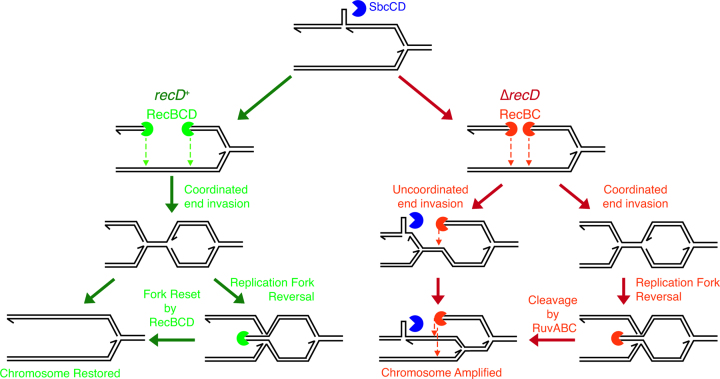Figure 6.
Model for RecBCD-mediated control of DSB-induced DNA synthesis. In the presence of RecBCD, the two ends at the site of a DSB undergo coordinated invasion of the sister chromosome to generate two convergent replication forks that are responsible for the replacement of genetic information lost during end processing. If one of the convergent forks is established before the other and causes the second fork to be reversed, the extruded double-strand end is readily degraded by RecBCD to restore a replication fork. By contrast in the absence of RecD, RecBC either catalyses uncoordinated end invasion or, if end invasion is coordinated, cannot deal with the subsequent fork reversal of one of the convergent forks. Cleavage by RuvABC of the Holliday junction caused by fork reversal that restores one of the ends converting coordinated end invasion to uncoordinated end invasion. In either scenario of uncoordinated end invasion in the absence of RecD, the palindrome is re-cleaved, the chromosome is amplified and viability is lost.

